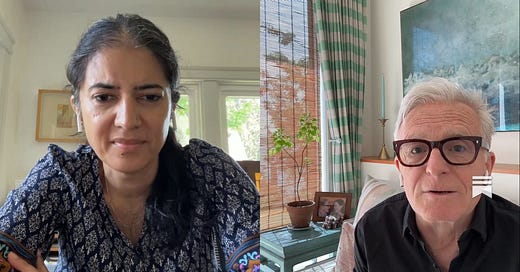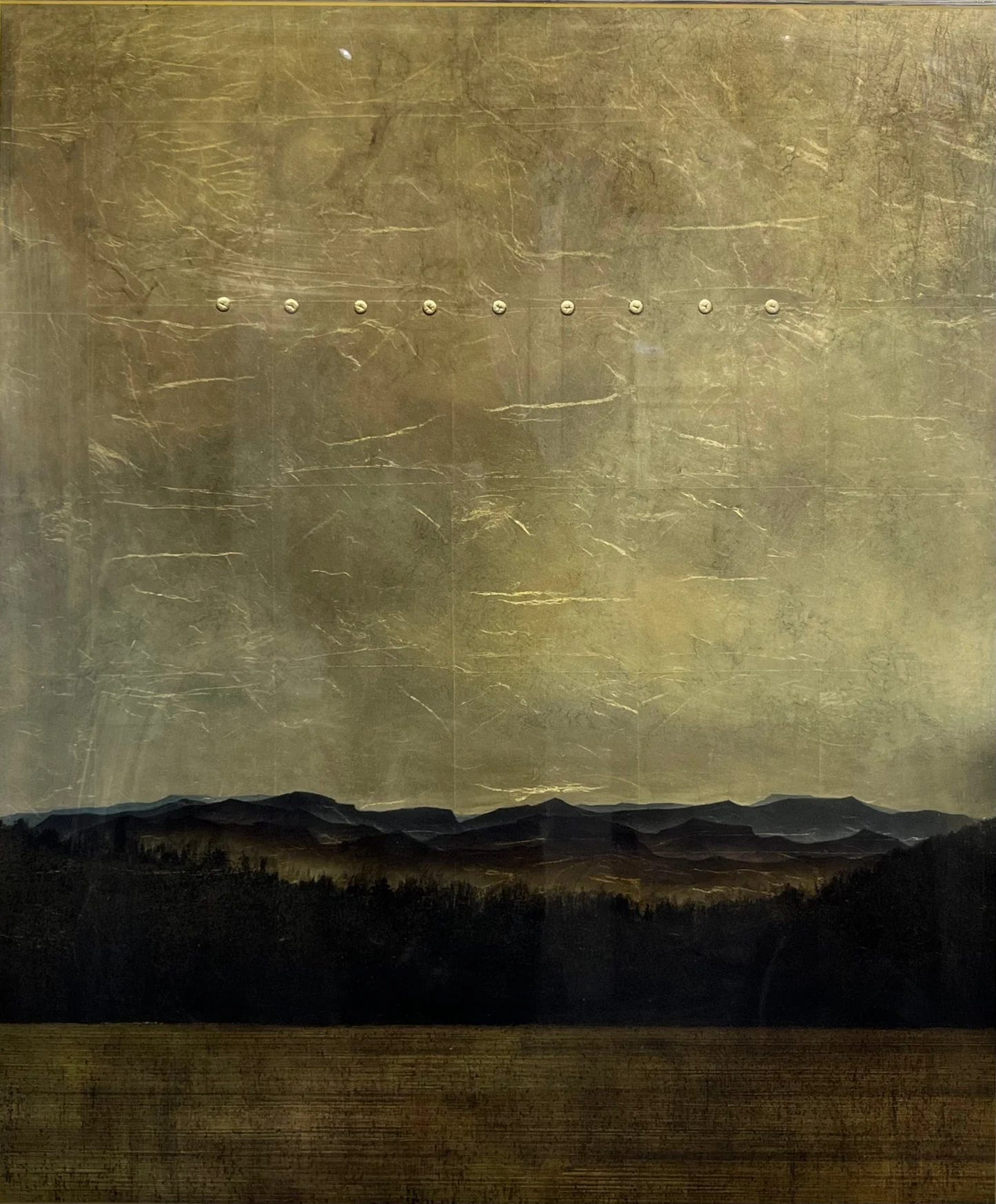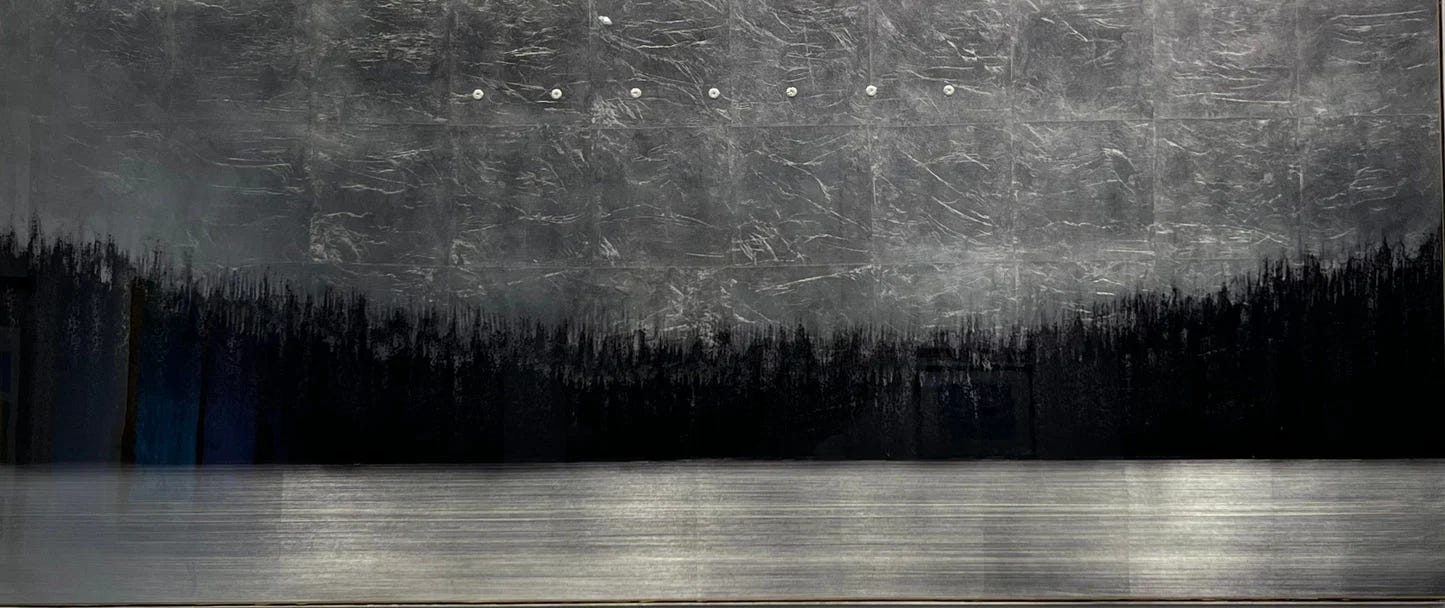If you’ve been following this newsletter, you know I’m deeply interested in how artists can build sustainable careers—ones that allow them to keep making work for the long haul, without burning out or selling out.
For some, sustainability might mean holding onto a 9-to-5 and painting on weekends. For others, it might look like teaching, selling online, or diversifying into prints and merch. However, for many artists, gallery representation remains the ultimate dream.
The problem? Relying on one gallery can be risky. Galleries close, shift focus, or simply stop selling your work. That’s why I was eager to talk to David Graff, a Canadian artist whose entire livelihood is built on his relationships with multiple galleries—eight at the moment, and over 20 throughout his career.
David’s story is a masterclass in co-representation—a strategic approach that spreads risk, builds income stability, and allows him to focus on what he loves most: being in the studio.
From Musician to Visual Artist
David started his career as a professional musician, touring and making a decent living. But after 20 years, he hit a wall. “I just got burnt out,” he told me. “It wasn’t going to work for another 20 years.”
Always drawn to texture and surface, he pivoted to a gilding and finishing business. That’s when fate intervened. A neighbor, Janice McLean, who happened to own a gallery, saw his gilded work and encouraged him to try making fine art with the same materials. Twenty years later, Janice is still a mentor—and David is a full-time artist with a thriving career.
The Early Years: Work Ethic Over Perfection
David’s early paintings make him “cringe,” he says. “I don’t know why someone paid for those.” But what mattered was that he kept going. He sold work to restaurants and commercial clients, refined his technique, and developed a distinctive style—what he calls “2D sculpting” using metal leaf instead of brushes.
“I wasn’t just sitting on my laurels,” he says. “I put in a lot of hours.”
Playing the Gallery Game—Strategically
David’s first gallery connections came through Janice, who helped him build relationships in British Columbia. Over time, he expanded to other regions, tailoring his work to suit local tastes—landscapes for West Coast galleries, prairies and Rockies for Alberta.
His strategy? Multiple galleries, each with its own market and aesthetic niche. Larger pieces, which are sold to corporations and institutions, coexist with smaller works intended for individual collectors. Feedback from gallerists helps him adjust, but he continues to evolve.
“You can’t keep sending the same trees to the same gallery forever,” he says. “You’ll saturate their market.”
Contracts, Trust, and Caution
David is meticulous about contracts—they spell out who pays for shipping, how revenue is split, and when payments are due. Still, contracts don’t guarantee protection. He’s currently in a legal dispute with a gallery that owes him thousands.
“That’s why I don’t rely on just one gallery,” he says. “If that had been my only outlet, I’d be in real trouble.”
At the same time, he values long-term trust. Janice, for instance, still takes a small commission on sales she helps with—no paperwork required.
Diversification and Resilience
Beyond galleries, David has taken on commissions, although he admits that balancing client requests with his artistic vision is a challenge. He has experimented with publishing prints and selling them through others—some of these deals fizzled after COVID, but the attempt reflects his willingness to diversify.
Unlike many artists today, he keeps a low profile on social media. “It’s too competitive,” he says. Instead, he emphasizes studio time and personal connections. His advice to emerging artists:
“Be organized. Have a good portfolio. Send six or eight strong images—don’t overwhelm people. And follow up. If someone meets you in person, they’re more likely to look at your work seriously.”
The Value of Gallery Relationships
David prefers giving galleries their 50% cut because they bring in clients he’d never reach alone—like a major commission from a Peruvian silver mining company, thanks to his background in gilding.
“A good gallery offers honest feedback and helps you grow,” he says. “You’ve got to be open to that.”
Final Thoughts
Over the past two decades, David has worked with more than 20 galleries. Some were a great fit. Others went out of business. The constant? Persistence, humility, and a willingness to evolve.
His pricing model—$3 per square inch, with flexibility for buyers—reflects his pragmatism:
“I’d rather have 70% of something than 100% of nothing.”
If you’re an artist hoping to make a living through your work, David’s story is proof that you don’t need one magical gallery to “make it.” You need a portfolio, a process, and the courage to keep putting yourself out there—again and again.











Share this post